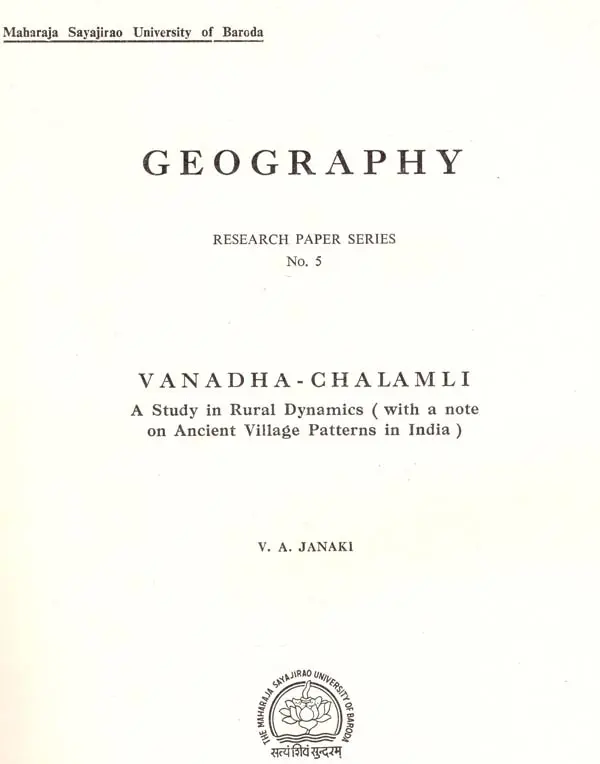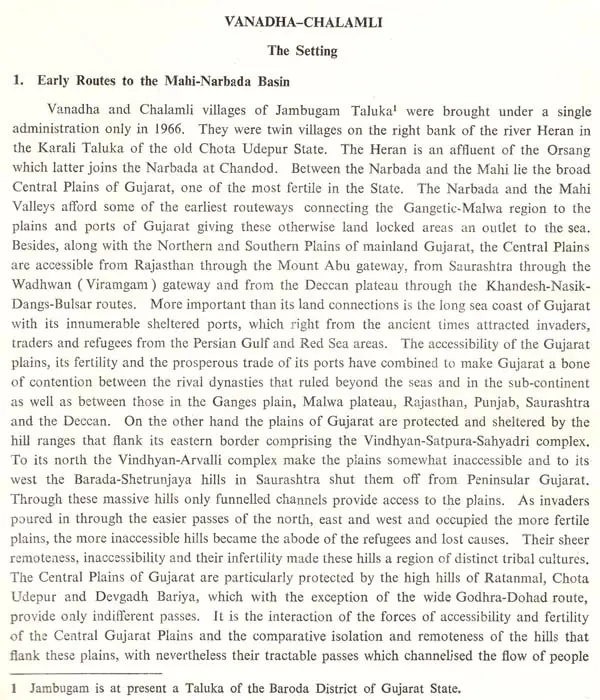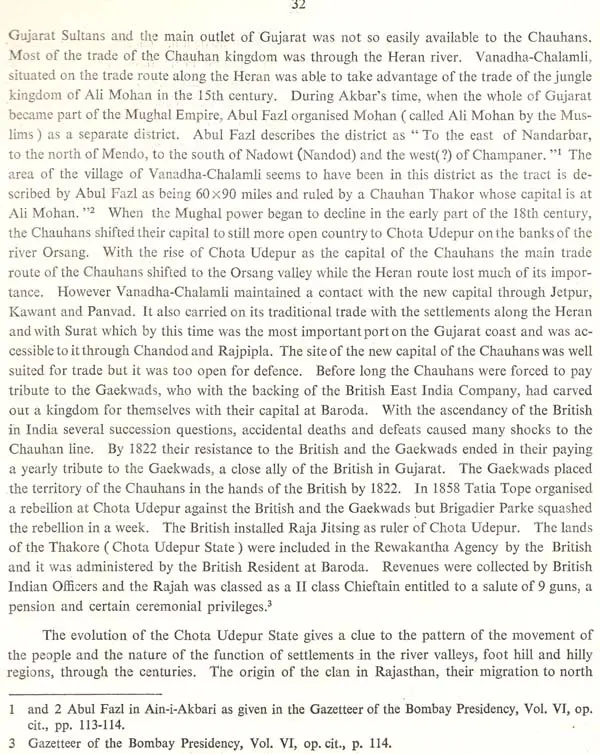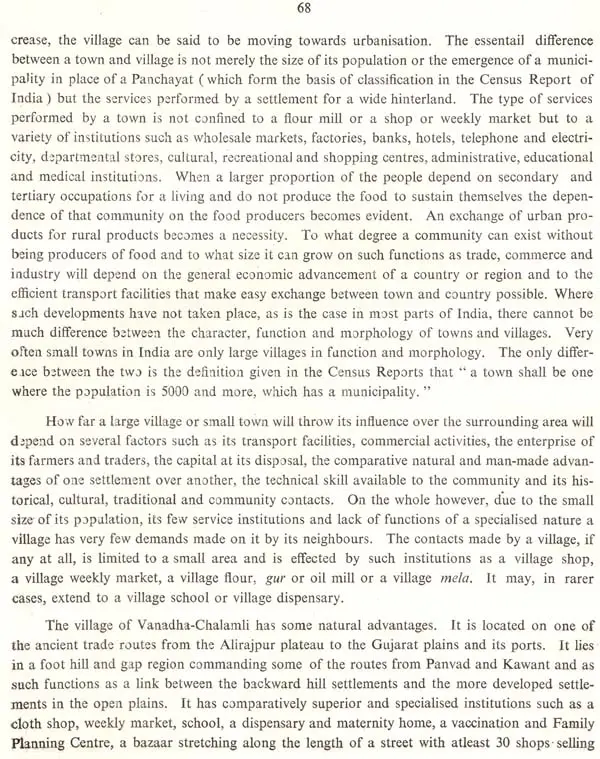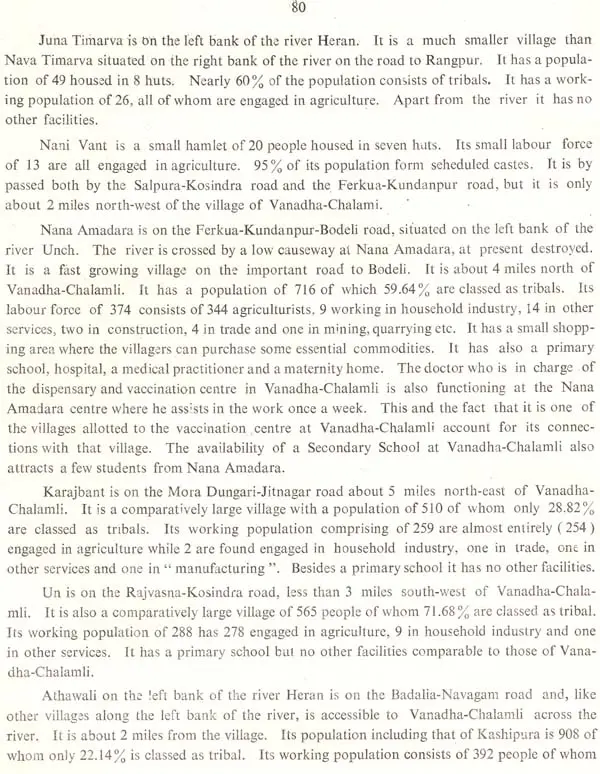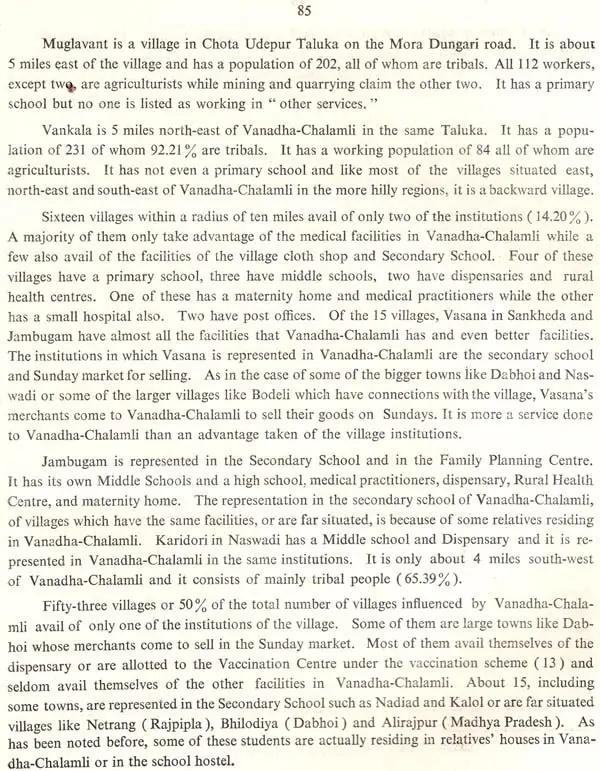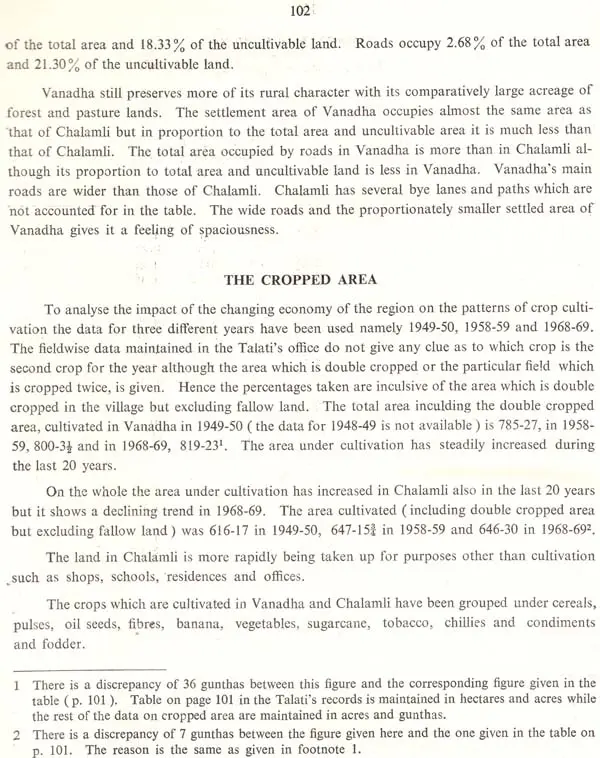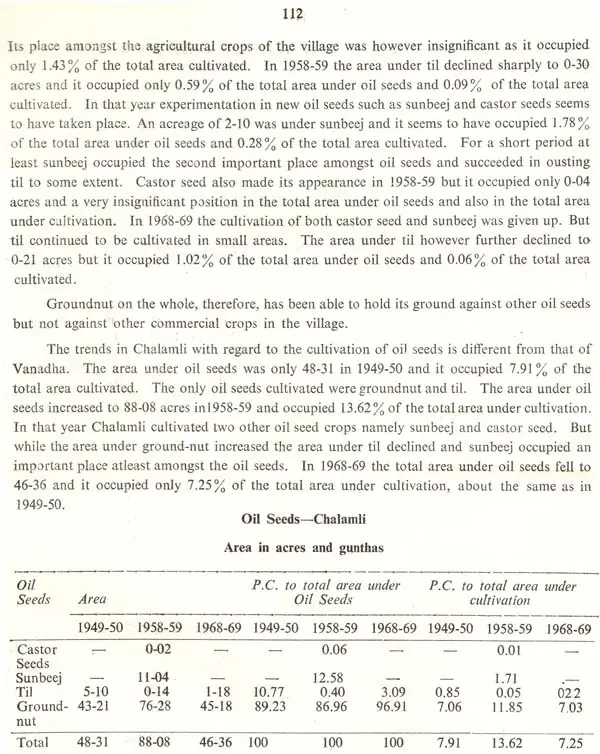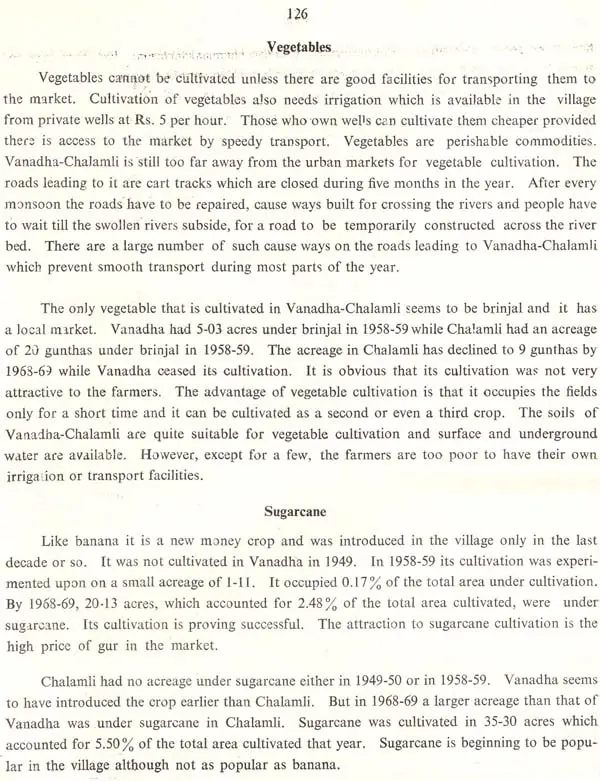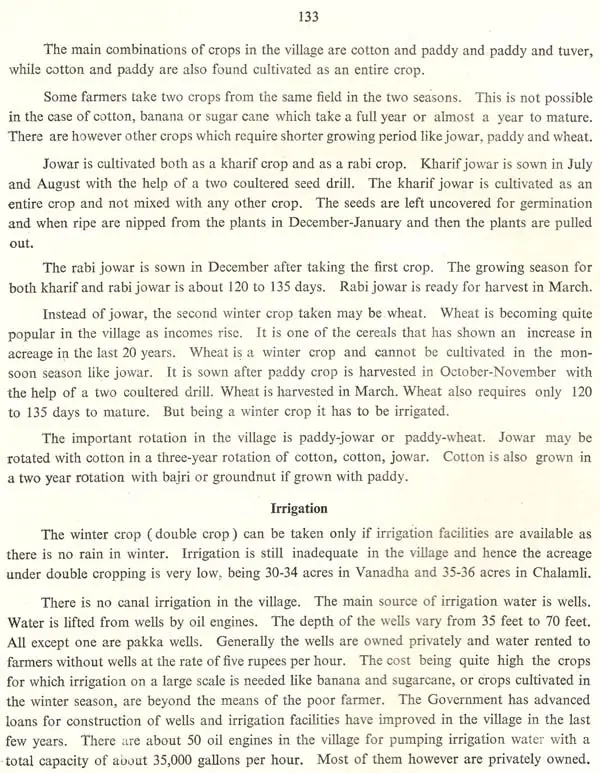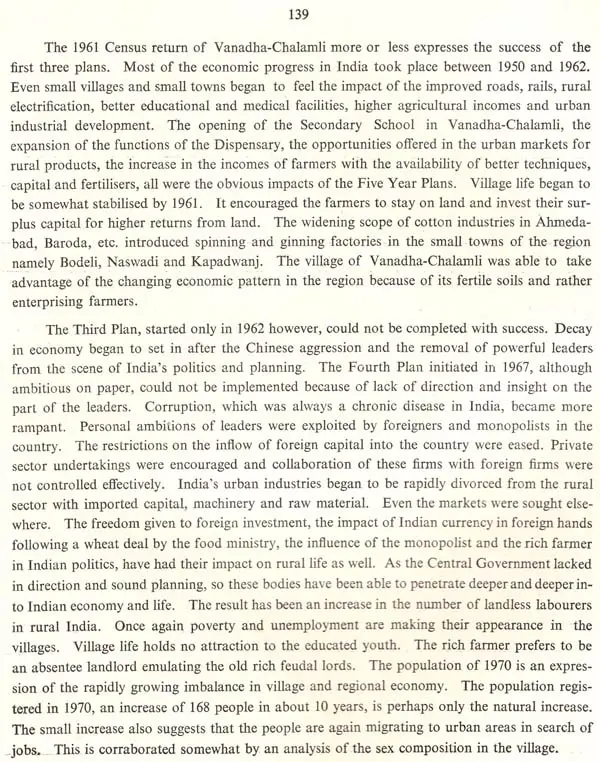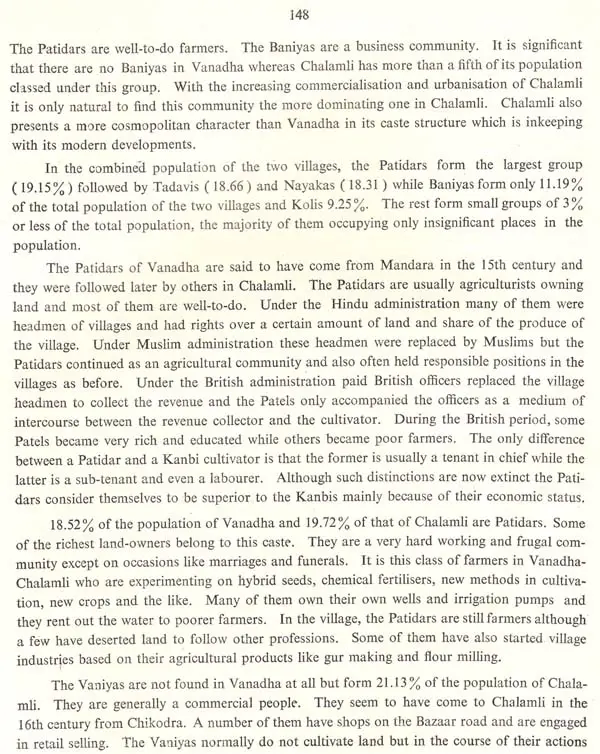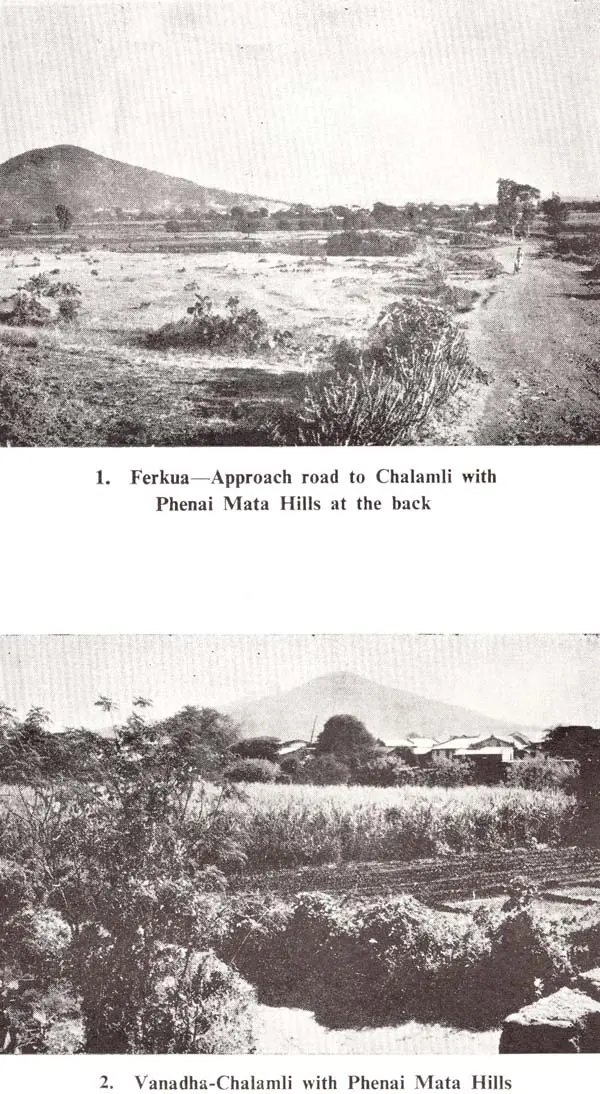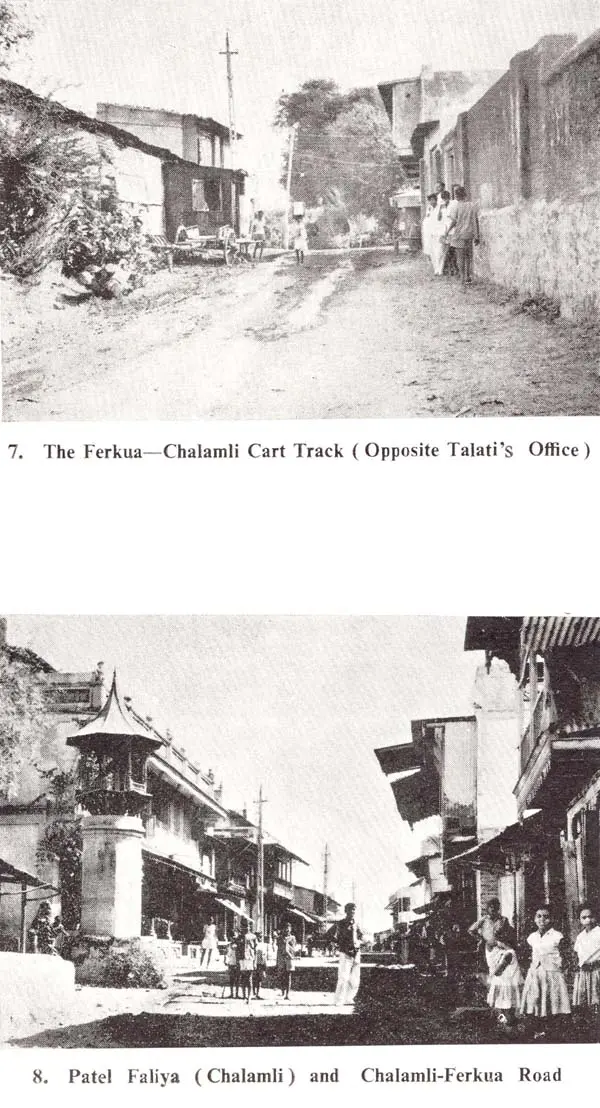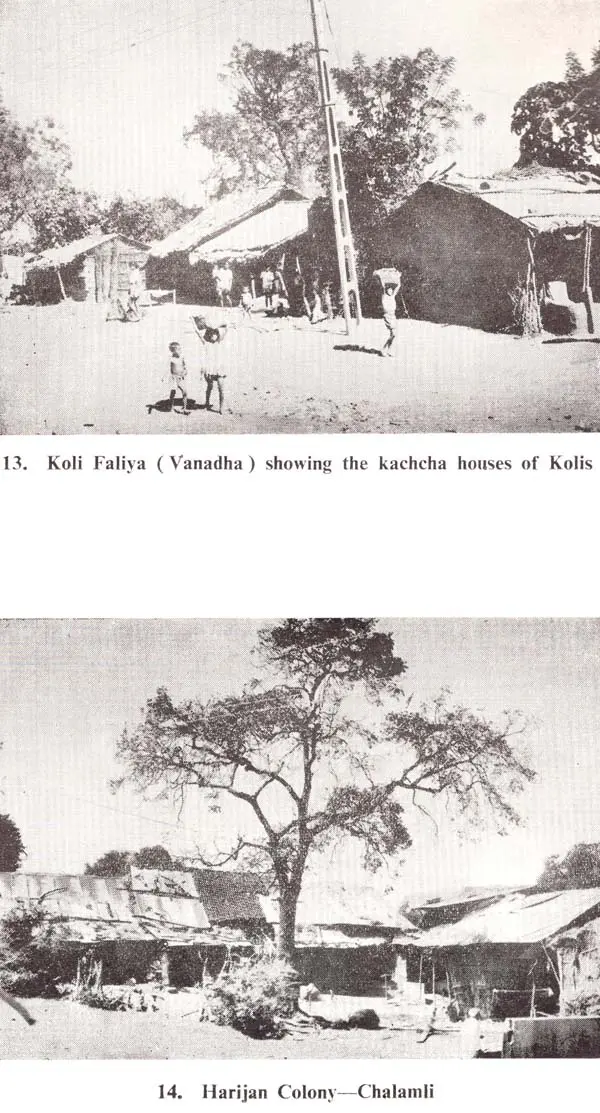
Vanadha-Chalamli (A Study in Rural Dynamics with A Note On Ancient Village Patterns in India) (An Old & Rare Book)
Book Specification
| Item Code: | UAQ361 |
| Author: | V.A. Janki |
| Publisher: | The Mahraja Siyajirao University of Barodra |
| Language: | English |
| Edition: | 1971 |
| Pages: | 150 Illuseration B/W |
| Cover: | PAPERBACK |
| Other Details | 11.00 X 8.50 inch |
| Weight | 560 gm |
Book Description
1. Problems of Rural India In a community where techniques are primitive, mankinds' activities are controlled to a greater extent by his physical and biological environment than in a well-organised industrial community. India is still a country where "there has been no organic revolution, no develop ment in material culture, so that the pattern set in the second millenium B.C. has not radically changed to this day". Except for certain imperfectly assimilated Western ideas in the cities and the more recent post-independent developments "India presents today a country mediaeval where it is not pre-historic ".? To the traditional isolation and self-sufficiency of the Indian villages, which were economic necessities in the context of ancient and mediaeval transport, were added poverty and ignorance in the wake of competition from machine-made goods, British economic and educational policies and the consequent decay of agriculture and village crafts. In the British period, India lost that balance which she had achieved during the ancient and mediaeval periods, between agriculture and industry and between the urban and rural sectors. The isolation of the village forced on the country by the slowness of ancient and mediaeval transport, was perpetuated and crystallised in the modern period by the policies of a foreign government. This isolation and extreme poverty still continue to be the main problems of Rural India. Twenty years of economic planning in independent India has achieved some results but has not yet succeeded in wiping out patterns established over centuries. The development is not the result of systematic national planning but of a piecemeal arrangement by individual industrialists or agriculturists functioning under the public or private sector. The policies of the different states which, according to the constitution of India are given a considerable amount of autonomy and freedom of Economic planning have also resulted in areal disparity in economic development. The aim of the Central Government since independence was to establish a mixed economy where both private and public enterprises would contribute to increasing production. The Government stepped in as producer and planner partly because there was a dearth of capital in private hands for taking the initiative risks and mainly to avoid the evils of concentration of wealth in the hands of a few. Whatever was the original aim, the result of the mixed economy was accumulation of wealth in private hands and an unhealthy competition between the private and public sector. The different state Govern ments also have tackled problems in their own way. Some have encouraged the private sector as in Gujarat while others have encouraged State enterprises.
**Contents and Sample Pages**
